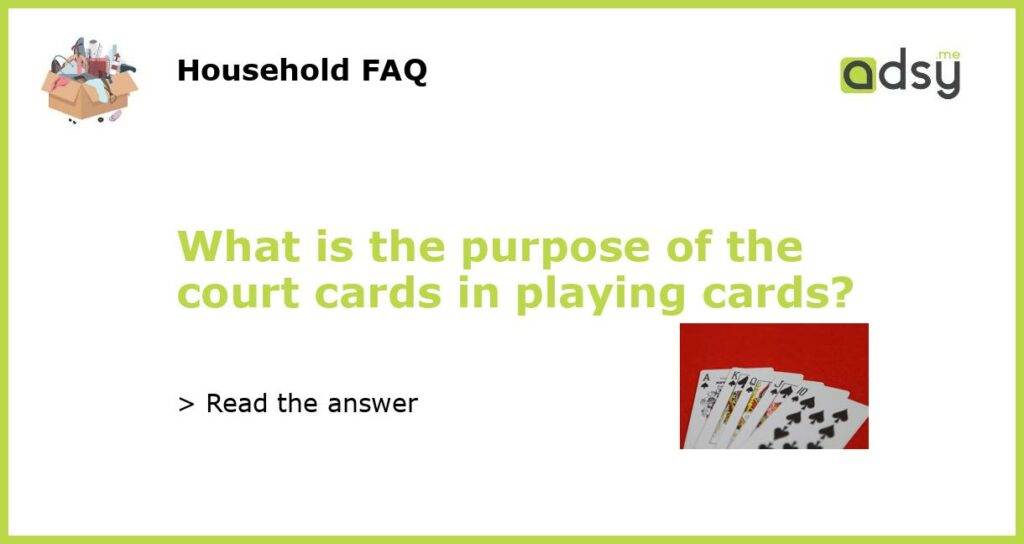Understanding the Purpose of Court Cards in Playing Cards
Playing cards have been around for centuries and are commonly used for many different games and activities. Each deck of playing cards typically includes four suits: hearts, diamonds, clubs, and spades. Within each suit, there are a set of court cards, which are known for their unique designs and characters. But what is the purpose of these court cards? Let’s explore.
Representing Power, Authority, and Social Hierarchy
Court cards in playing cards are often used to represent power, authority, and social hierarchy. In a traditional deck of playing cards, each suit has three court cards: the king, queen, and jack (or knave). These court cards were influenced by the European feudal system, where kings, queens, and their noblemen held positions of power.
In a deck of playing cards, the king card typically represents the highest position of power within a suit. The queen card represents the female counterpart to the king and often holds a position of influence. The jack card, on the other hand, represents a lower-ranking nobleman or soldier.
The court cards, with their distinct characters and positions in the hierarchy, add value and complexity to games and can reflect social dynamics in various cultures.
Adding Strategic and Tactical Elements to Games
Court cards also add strategic and tactical elements to many games. In games like poker or bridge, players often use the court cards to assess the strength of their hands. The value and significance of court cards differ from game to game, but their presence allows for more nuanced gameplay.
For example, in poker, the king is often considered a powerful card and can significantly influence a player’s strategy. Similarly, in games like bridge, where players form partnerships, the court cards can be used to communicate and strategize with your partner.
The inclusion of court cards in playing decks adds an additional layer of depth and complexity to gameplay, making the games more engaging and challenging.
Providing Symbolism and Narrative
Court cards are not only used for gameplay purposes but also serve as symbolic representations and narratives. The characters depicted on the court cards often have rich histories and stories associated with them.
For example, in a traditional deck of playing cards, the king of hearts represents Charlemagne, the king of diamonds represents Julius Caesar, the king of clubs represents Alexander the Great, and the king of spades represents King David from the Bible.
These historical and mythical characters provide a sense of storytelling and can add a layer of intrigue and fascination to the game of cards. They allow players to connect with the past and feel a deeper connection to the cards they hold in their hands.
Enhancing Aesthetic Appeal
Finally, court cards play a crucial role in enhancing the aesthetic appeal of playing cards. The elaborate and detailed designs of the court cards often feature lavish costumes, intricate patterns, and vibrant colors.
These visually stunning court cards make the deck of playing cards more eye-catching and visually appealing. They add to the overall experience of playing card games, creating a sense of luxury and sophistication.
Additionally, court cards have become popular subjects for collectors and artists alike. Many artists have created unique and creative interpretations of court cards, showcasing their talent and imagination.
A Staple of Playing Card Tradition
The court cards in playing cards have a long-standing tradition and serve multiple purposes. They represent power and hierarchy, add strategic elements to gameplay, provide symbolic narratives, and enhance the aesthetic appeal of the cards. Whether you are a casual player or an avid collector, the court cards are an essential part of the timeless allure of playing cards.






